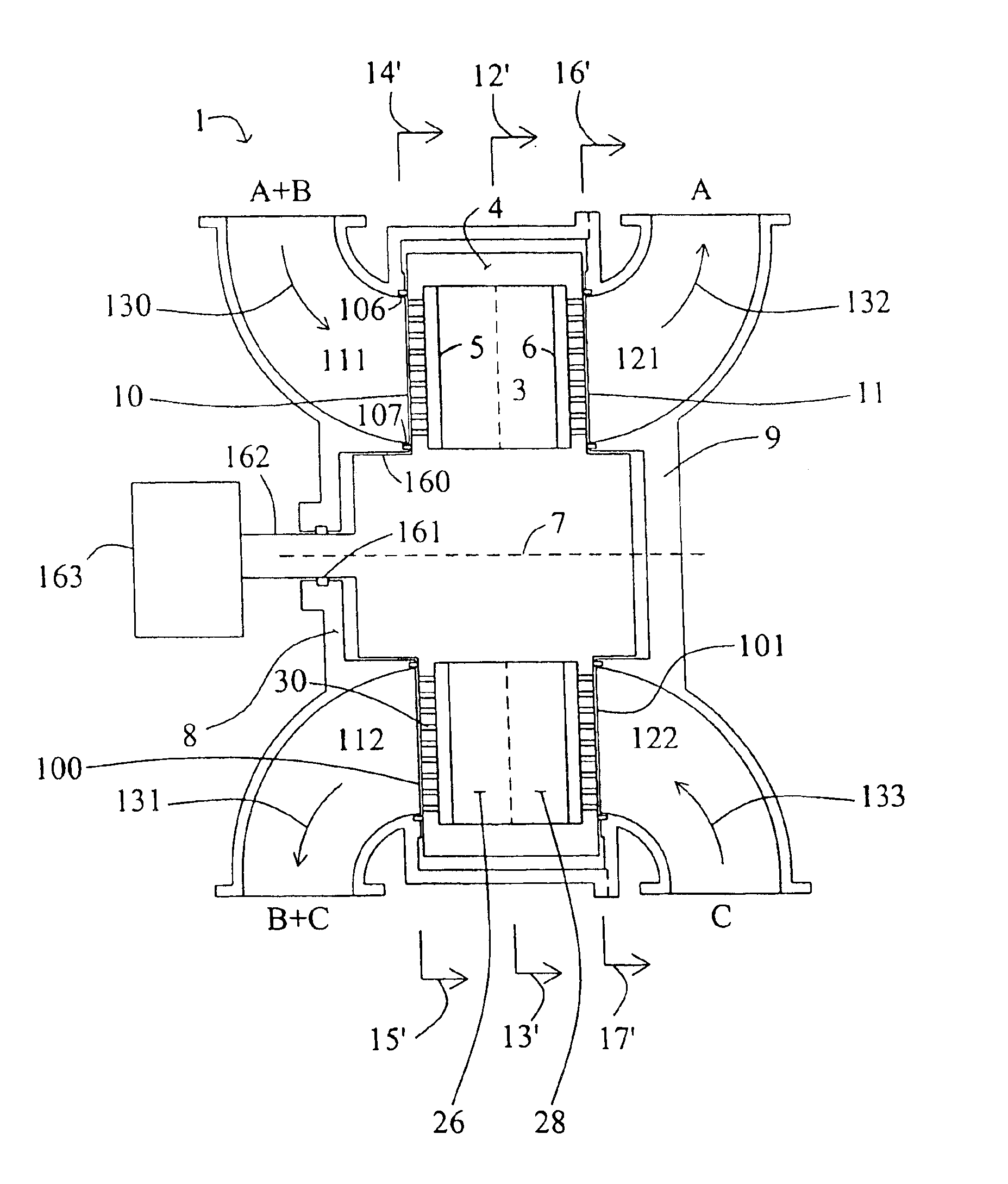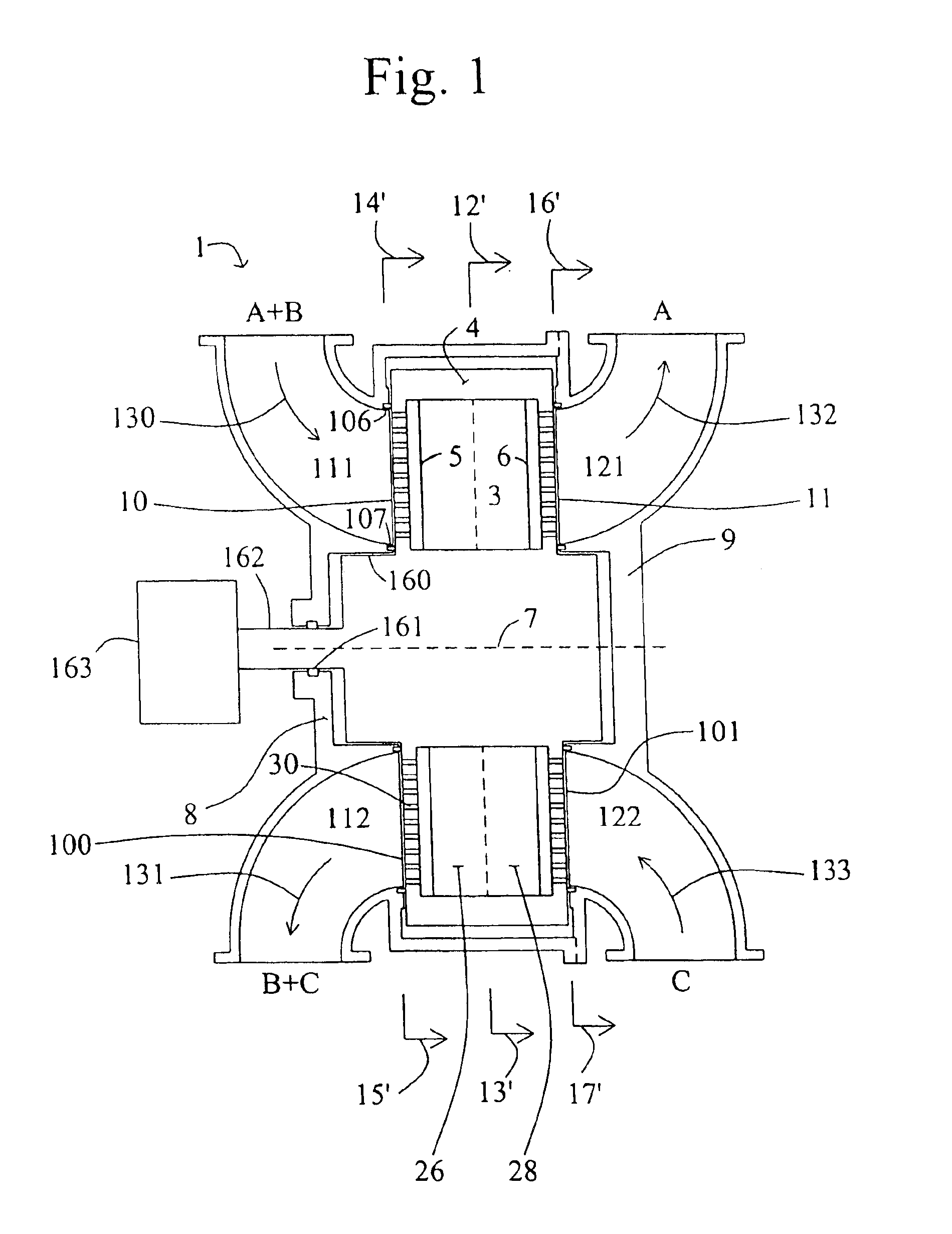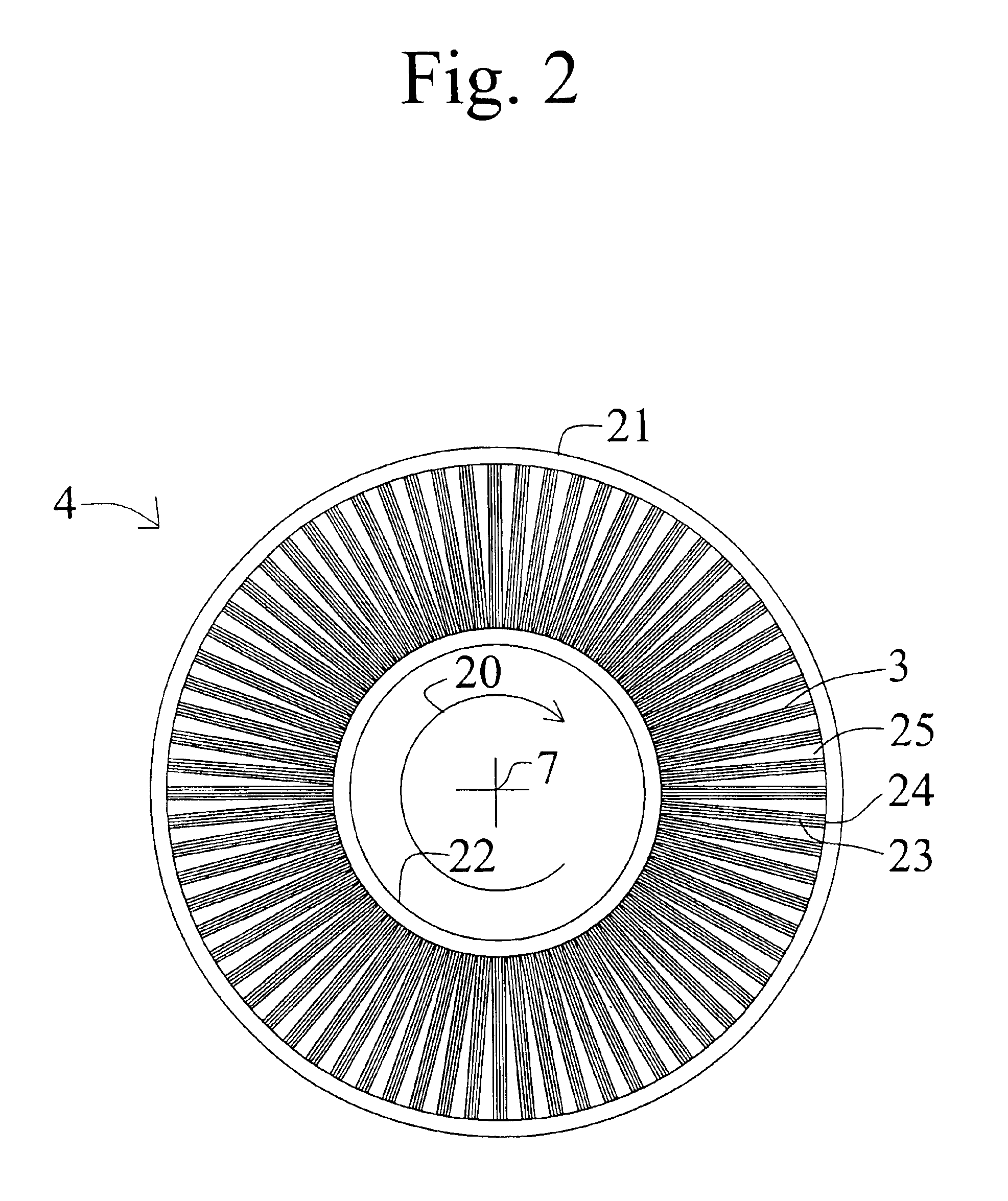[0014]The process for each adsorber includes a feed step in which the first gas mixture is admitted at a first total pressure to a first end of the adsorber, while a first or “light” product gas enriched in component A is delivered from a second end of the adsorber as component B is preferentially adsorbed on the adsorbent contacting the flow channel(s) of the flow path within the adsorber. The process also includes a displacement purge step in which displacement purge gas-containing component C is admitted to one end of the adsorber, while a second gas mixture (or “heavy” product gas) is delivered at a second total pressure from the other end of the adsorbers as component B desorbs from the adsorbent. The first and second pressures may be substantially similar, or the second pressure may be substantially less than the first pressure to obtain a pressure swing component for the separation process. Also, the temperatures of the components may vary, such as component C being at a higher temperature than other components, to obtain a temperature swing component for the separation process. In such cases where the pressure and / or temperature of the first product gas and second gas mixture are varied, such variations may be employed to increase the overall efficiency of the separation process.
[0015]In an aspect where gas components A and C are incompatible, immediately prior to the displacement purge step, a first “buffer” step is performed in the disclosed process, in order to remove interstitial and adsorbed component A accumulated in the adsorber from the previous feed step, so as to avoid contamination of the second gas mixture (containing components B and C) to be produced in the imminent displacement purge step by component A. Likewise, immediately following the displacement purge step, a second “buffer” step is performed in the disclosed process, in order to remove interstitial and adsorbed component C accumulated in the adsorber from the previous purge step, to avoid contamination of the first product gas to be produced in the following feed step by component C.
[0018]The total pressure may be reduced (e.g. below the second pressure at which the displacement purge step is conducted) during the buffer steps to assist the removal of components A or C to be purged, and also to avoid any leakage (external to the adsorbers) of components A or C between process steps preceding and following each buffer step. With reduced total pressure in a first buffer step, desorbing component B may assist the purging of component A during that first buffer step. Hence, a minor pressure swing to reduce the total pressure during buffer steps, by a modest level of vacuum if the second pressure is substantially atmospheric, may be used to enhance the reliability of the buffer steps, independently of whether a larger pressure swing is applied to assist the enrichment of component A. Similarly, a minor temperature swing may be implemented during buffer steps to assist in purging of the relevant component, and to thereby enhance the reliability of the buffer step, or alternatively to enhance the efficiency of the following adsorption or desorption step.
[0024]The rotor of a rotary adsorption module embodiment for use in the disclosed systems and processes includes a plurality of flow paths for receiving adsorbent material therein for preferentially adsorbing a first gas component in the flow paths relative to a second gas component. The gas separation system also may include compression machinery coupled to the rotary module for facilitating gas flow through the flow paths for separating the first gas component from the second gas component. The stator includes a first stator valve surface, a second stator valve surface, and plurality of function compartments opening into the stator valve surfaces. The function compartments include a gas feed compartment, and a light gas component exit compartment, and a buffer gas compartment. “Light gas” refers to withdrawn gas enriched in the second, less readily adsorbed component, which is typically withdrawn from the second ends of adsorbers via the second valve means. However, in some processes according to the present disclosure which are adapted for implementation with the above described rotary module embodiment, feed gas mixture may enter the adsorbent beds at the second end of the adsorbers via the second valve means, and light product gas may be withdrawn at the first end. Similarly, any buffer or purge steps incorporated in such processes may be performed in either direction by admitting buffer or purge gas to either the first or second end of an adsorber. In the case where the disclosed rotary module is operated utilizing a gas separation process including a substantial pressure swing component, in addition to displacement purge, the function compartments may additionally include light reflux exit and return or other compartments to conduct light reflux, blowdown, pressurization or other gas flows related to the pressure swing component of the gas separation process to and from the adsorbers. Any such gas flows, in addition to product, buffer or purge gas flows may also be transferred from one adsorber to another, for flow through the receiving adsorber in either direction, by means of fluid connection means extending between the respective function compartments opening into the first and second stator valve faces. Such inter-adsorber transfer of gas flows may be utilized for example to recycle buffer gas flows between adsorbers to effectively enhance recovery of product gas components (A and B) by capturing product flows expelled from the adsorbers at the onset of a buffer step (instead of exhausting those product flows to the atmosphere), and to reduce the volume of buffer gas required to perform the buffer steps. Additionally, recycling of buffer gas flows expelled at the onset of subsequent feed or purge steps in some embodiments of the presently disclosed processes enables the reduction of residual buffer gas remaining in adsorbers following a buffer step that may be delivered in product gas flows (containing product components A or B), thereby increasing the purity of product gas flows, and reducing any buildup of buffer gas component in cases where product gas components may be recycled through downstream systems or processes.
 Login to View More
Login to View More 


